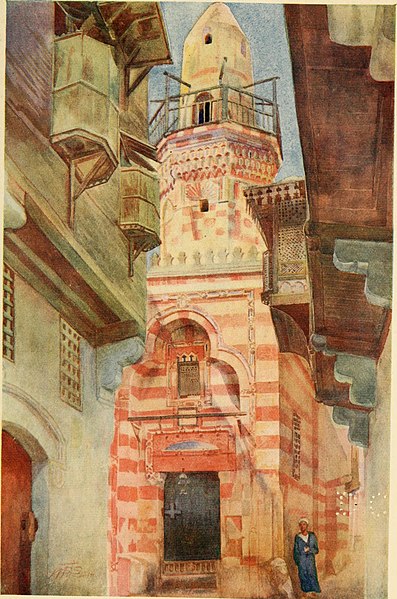File:Cairo, Jerusalem, and Damascus- (1912) (14596567447).jpg

Original file (2,040 × 3,080 pixels, file size: 1.26 MB, MIME type: image/jpeg)
Captions
Captions
Summary edit
| Artist |
Walter Spencer-Stanhope Tyrwhitt (W.S.S Tyrwhitt R.B.A.) 1859-1932 |
| Author | |
| Description |
English: Identifier: cairojerusalemda01marg (find matches) |
| Date |
1912 date QS:P571,+1912-00-00T00:00:00Z/9 |
| Source/Photographer |
https://www.flickr.com/photos/internetarchivebookimages/14596567447/ |
| Permission (Reusing this file) |
At the time of upload, the image license was automatically confirmed using the Flickr API. For more information see Flickr API detail. |
| Flickr tags InfoField |
|
| Flickr posted date InfoField | 30 July 2014 |
Licensing edit
|
This is a faithful photographic reproduction of a two-dimensional, public domain work of art. The work of art itself is in the public domain for the following reason:
The official position taken by the Wikimedia Foundation is that "faithful reproductions of two-dimensional public domain works of art are public domain".
This photographic reproduction is therefore also considered to be in the public domain in the United States. In other jurisdictions, re-use of this content may be restricted; see Reuse of PD-Art photographs for details. | |||||
This image was taken from Flickr's The Commons. The uploading organization may have various reasons for determining that no known copyright restrictions exist, such as: No known copyright restrictionsNo restrictionshttps://www.flickr.com/commons/usage/false
More information can be found at https://flickr.com/commons/usage/. Please add additional copyright tags to this image if more specific information about copyright status can be determined. See Commons:Licensing for more information. |
| This image was originally posted to Flickr by Internet Archive Book Images at https://flickr.com/photos/126377022@N07/14596567447. It was reviewed on 26 August 2015 by FlickreviewR and was confirmed to be licensed under the terms of the No known copyright restrictions. |
26 August 2015
File history
Click on a date/time to view the file as it appeared at that time.
| Date/Time | Thumbnail | Dimensions | User | Comment | |
|---|---|---|---|---|---|
| current | 19:40, 26 August 2015 |  | 2,040 × 3,080 (1.26 MB) | Fæ (talk | contribs) | == {{int:filedesc}} == {{information |description={{en|1=<br> '''Identifier''': cairojerusalemda01marg ([https://commons.wikimedia.org/w/index.php?title=Special%3ASearch&profile=default&fulltext=Search&search=insource%3A%2Fcairojerusalemda01marg%2F fin... |
You cannot overwrite this file.
File usage on Commons
The following page uses this file: